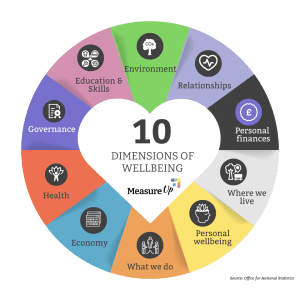With the Procurement Act looming, the way construction firms see – and see fit to report on – social value has to change. Catherine Manning, programme director at MeasureUp and board trustee at Social Value International, explains why the sector must look beyond apprenticeships to stay apace in this emerging field
Catherine Manning represents one of three partner companies pioneering a new movement in the social value space. For the first time, valuation data that’s usually hidden behind paywalls has been made publicly and freely available on the MeasureUp social value reporting platform.
This is a concerted and timely move ahead of the stalled Procurement Act coming into force from February 2025. The group of social and environmental experts behind the development has done so to help drive progress by supporting organisations of all shapes, sizes and social value maturity to conduct more meaningful measurement.
“The built environment is relatively progressive in this area, given the sector’s impact in the public realm and the growing awareness of the difference social value – or social sustainability – initiatives make to communities, but there is still a great deal of complexity to unpick,” says Catherine Manning, programme director for MeasureUp and a trustee
at global industry body Social Value International.
More compelling bid submissions
Apprenticeship schemes, especially in construction, have been synonymous with social value for many years. With a rounded, overall monetised value of £32,000 per apprentice,
there is no doubting the positive contribution such schemes deliver from an economic and wellbeing perspective.
But Catherine’s concern is that an overemphasis on apprenticeship schemes could be steering the social value agenda off course.
In comparison to other community-centred approaches, apprenticeships are arguably easier to implement and measure and therefore represent low-hanging fruit for procurement points.
Especially as no two schemes are equal – the true value depends on the quality of the apprenticeship and the robustness of sponsoring companies’ measurement and
reporting methodologies.
By giving organisations ready access to a framework that also helps them to carve out a path for continuous improvement, the hope is that design and build teams will explore innovative projects that wholeheartedly consider geographical and contextual factors.
With reliable data to hand, it’s easier to determine the most beneficial course of action for all concerned. Otherwise, how do you attempt to quantify the impact of tackling loneliness? Providing more access to green spaces? Engaging young people in youth activities? Improving mental health?
The impetus behind MeasureUp is to showcase the value of less conventional, but no less meaningful, activities that could in fact be game-changing for a particular community.
Making measurement less murky
MeasureUp uses the WELLBY methodology and is aligned to ONS 10 dimensions of wellbeing, the UK government Green Book guidance, the Sustainable Development Goals
and the Central Government Social Value Model.
The calculations relating to each type of activity gives organisations an indicative figure to better understand and report on the difference their time, resources and financial investments are making.
For example, according to MeasureUp:
- Providing access to green spaces has a monetised social value of £3,600 per person, per year. If a scheme is within two minutes’ walking distance for 200 local residents this would equate to £540,000 – assuming that 75% of the population strongly agrees that the initiative is easily accessible.
- Reducing loneliness equates to £8,100 per person, per annum. This is the monetised value of one person reporting they are “hardly ever or never” lonely from being “some of the time” lonely, over the course of a year.
- Engaging in youth activities is estimated to have a wellbeing and economic value of £2,350. This headline value includes the wellbeing value of a young person (high school age 12-18) engaging in youth activities (over a regular period during a year) with the longer-term economic gain of greater educational attainment.
- Improved mental health is attributed a value of £30,700 for every person that reports to have “good”, as opposed to “poor”, mental health over a year.

Work in progress
Comparing one to another, this could suggest apprenticeship schemes are more valuable. But MeasureUp encourages users to understand the details and context.
For example, considering what type of value is included – economic, fiscal, wellbeing? Also, the time investment involved in delivering the desired outcomes. Using these values helps decision makers to account for the wider reach that initiatives providing access to green spaces or tackling loneliness may result in.
“Apprenticeships have hugely tangible benefits, but they are not the only social value path. The decision on what to do should be based on needs and potential for greatest impact, and that needs to be better determined by data and not the default solution,” concludes Manning.
“We’ve studied and compiled sources and research to create MeasureUp to help support users to make better informed social value decisions. It’s by no means perfect but it at least goes some way to creating a more level playing field as procurement bodies re-evaluate their criteria and seek evidence of a greater appreciation of the communities, context and geographies impacted by built environment projects.”













